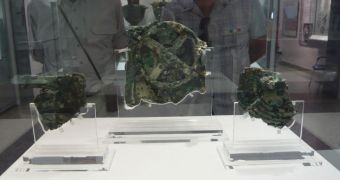Analysis of the famous Antikythera Mechanism has revealed that its constructors had a very advanced understanding of celestial mechanics, on par with the knowledge of astronomers that lived hundreds of years later.
This device, which was recovered more than 110 years ago from a shipwreck near the Greek island of Antikythera, is one of the most complex things ever built in the ancient world.
It is basically an astronomical calculator, which keeps track of things such as the current date, months, the time of upcoming eclipses, the time of future Olympic games, and arguably other things as well.
However, in order for the mechanism to be correct, its builders also had to account for an intricate behavior that the Moon displays. The celestial body has a slight variation in its motions over the course of a month, that sometimes makes it appear to be moving slower or faster than usual.
The 2,000-year-old device was apparently taking this variation into account as well when predicting the next lunar eclipse. This puzzled experts because such knowledge was thought to have been discovered only centuries later.
“It’s a pretty elaborate piece of machinery. Nobody would ever have guessed that there could be something this complex in the second century [BC],” explains University of Puget Sound science historian James Evans.
The expert made a presentation of the discovery on March 31, at the University of Washington in Seattle (UWS), Wired reports. He said that the precision of the Antikythera Mechanism rivaled that of 19th century clocks.
Based on pure geometry, the instrument performs all of its calculations with the help of 37 interlocking dials. A subtle variation in two overlapping gears was determined to be responsible for compensating for the weird motions of the Moon.
In the latest study to be conducted on the device, experts found that it may have accounted for a similar variation in the movement of the Sun as well. This time, instead of tweaking the gears, the constructors decided to stretch the zodiacal signs through which the Sun was traveling on a dial.
This gave the impression that the Sun moved slower at certain times of the year, without the need to actually construct and place more dials and wheels within. This was most likely done because the movement variation the Sun displays is a lot smaller than the Moon's.
X-ray images of the Antikythera Mechanism revealed that the zodiacal signs were not divided equally in either the Greek or Egyptian calendar dials the machine had. Thus far, experts analyzed 88 percent of the dials' surface, as the remaining portion is too damaged to allow study.
“It made more sense to do it this way than to try to use an elaborate wheel upon wheel sort of thing, as they did for the lunar orbit,” Evans explained. He added that the device may have also contained gears wheels accounting for the motions of Mercury, Venus, Mars, Jupiter and Saturn.
The Antikythera Mechanism “was meant to be a statement, to impress, to instruct, rather than being a day to day practical calculating device,” he added.

 14 DAY TRIAL //
14 DAY TRIAL //